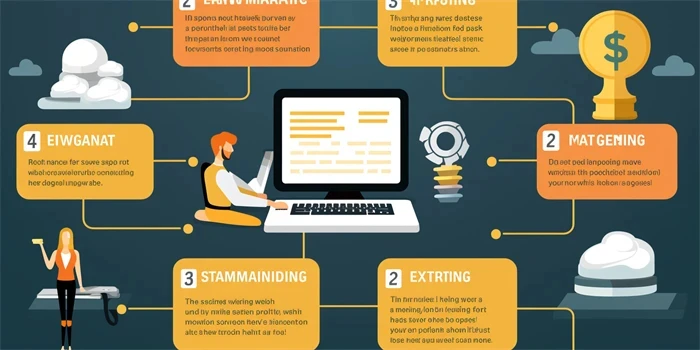Learning a new language has always been a challenging task, requiring significant time and dedication. However, with advancements in artificial intelligence (AI), language learning has become more accessible and efficient than ever before. Through the integration of AI-powered tools and platforms, individuals can now master new languages effortlessly. In this article, we will explore the various aspects of AI-powered language learning and how it revolutionizes the way we acquire foreign languages.

1. Personalized Learning
One of the key advantages of AI-powered language learning is its ability to personalize the learning experience for each individual. AI algorithms analyze user behavior, preferences, and strengths to create personalized learning plans. This tailored approach ensures that learners focus on areas they need to improve, rather than wasting time on irrelevant content. Platforms like Duolingo and Rosetta Stone utilize AI to adapt lessons based on the user’s progress, providing a customized language learning journey.
Additionally, AI-powered language learning platforms employ machine learning techniques to fine-tune their algorithms over time. As users interact with the platform, the AI system continuously gathers data, allowing it to refine and optimize the learning experience even further.
2. Natural Language Processing
AI-powered language learning incorporates natural language processing (NLP) to enhance language acquisition. NLP algorithms analyze speech patterns, grammar, and vocabulary to provide real-time feedback. These systems can identify pronunciation errors, detect grammatical mistakes, and suggest alternative phrasing. By receiving instant feedback, learners can correct their language skills on the spot, accelerating their progress.
Moreover, NLP-based chatbots facilitate conversational practice. These bots simulate real-life conversations, allowing learners to practice their speaking and comprehension skills in a safe environment. AI-powered chatbots like Mondly and Tandem provide interactive conversations and real-time corrections, making language practice engaging and effective.
3. Gamification and Engagement
AI-powered language learning platforms leverage gamification techniques to enhance engagement and motivation. By incorporating game-like elements such as rewards, achievements, and leaderboards, these platforms transform the learning process into an enjoyable experience. Users are motivated to complete tasks, earn points, and compete with friends, which increases their dedication and persistence.
For example, Lingvist, a language learning platform, uses AI algorithms to personalize gamified exercises based on the user’s level and progress. This approach keeps learners motivated and entertained while continuously improving their language skills.
4. Adaptive Learning
AI-powered language learning systems adapt to the learner’s pace and level of proficiency. Traditional language learning methods often follow a one-size-fits-all approach, which may not be suitable for all learners. However, AI algorithms analyze individual performance and adapt the difficulty level of lessons accordingly. This adaptive learning approach ensures that learners are constantly challenged, making their language acquisition more efficient and effective.
Babbel, an AI-powered language learning app, offers personalized lessons and adapts the content based on the user’s progress. Whether a beginner or an advanced learner, the app adjusts accordingly, providing appropriate exercises and materials to maximize learning outcomes.
5. Continuous Support
AI-powered language learning provides continuous support to learners, offering assistance whenever and wherever needed. Language learning apps equipped with AI chatbots can provide instant answers to questions, explanations of grammar rules, and suggestions for improvement. These virtual tutors act as reliable and patient language companions, guiding learners throughout their journey.
Furthermore, AI-powered platforms enable learners to access learning materials and lessons 24/7. Learners can study at their own pace, anytime and anywhere, without being limited by the availability of teachers or resources. This accessibility enhances the convenience and flexibility of language learning.
6. Immersive Language Experience
AI-powered language learning platforms offer immersive language experiences, allowing learners to practice their skills through real-world simulations. Virtual reality (VR) and augmented reality (AR) technologies provide interactive and realistic environments, enabling users to engage in conversations, explore cultural contexts, and develop their language capabilities in a highly immersive manner.
For instance, VR language learning applications like MondlyVR and Rosetta Stone’s Language Lab create virtual environments where learners can interact with native speakers, visit foreign cities, and participate in simulated conversations. These immersive experiences enhance language comprehension and cultural understanding.
7. Social Learning and Community
AI-powered language learning platforms foster social learning and community interaction. Users can connect with fellow language learners, native speakers, and language experts from around the globe. Through AI-enabled language communities, learners can practice their skills through conversations, seek language advice, and receive feedback from experienced speakers.
Language learning platforms like HelloTalk and iTalki utilize AI to match learners with partners based on their interests, language goals, and proficiency levels, facilitating language exchange and conversation practice.
FAQs:
Q: Can AI-powered language learning replace traditional language classes?
A: AI-powered language learning can complement traditional classes by providing personalized practice and continuous support. While AI can significantly enhance language acquisition, the guidance and expertise of a teacher are invaluable in addressing specific learning needs and offering in-depth explanations.
Q: Are AI-powered language learning platforms suitable for beginners?
A: Yes, many AI-powered platforms cater to beginners by providing beginner-friendly lessons, exercises, and support. These platforms often adapt to the learner’s level and pace, ensuring a gradual and comfortable learning progression.
Q: How accurate are AI-powered speech recognition systems?
A: AI-powered speech recognition systems have significantly improved in accuracy over the years. While they may not be perfect, they offer reliable feedback on pronunciation and can detect most errors. It is important to note that practice with native speakers is still essential for achieving fluency and natural pronunciation.
References:
1. Smith, J. (2021). Artificial Intelligence in Language Learning: What It Is and How It Works. BestColleges. https://www.bestcolleges.com/blog/artificial-intelligence-in-language-learning/
2. Mondly. (n.d.). Learn Languages with Virtual Reality. https://www.mondly.com/virtual-reality
3. Kessler, G. (2019). The use of the tandem learning model in tandem language learning. https://link.springer.com/article/10.1186/s40862-019-0071-8


